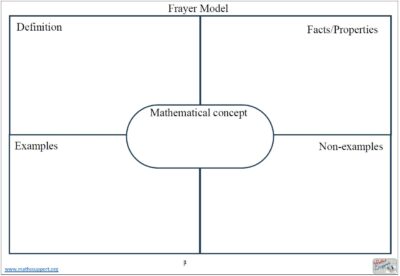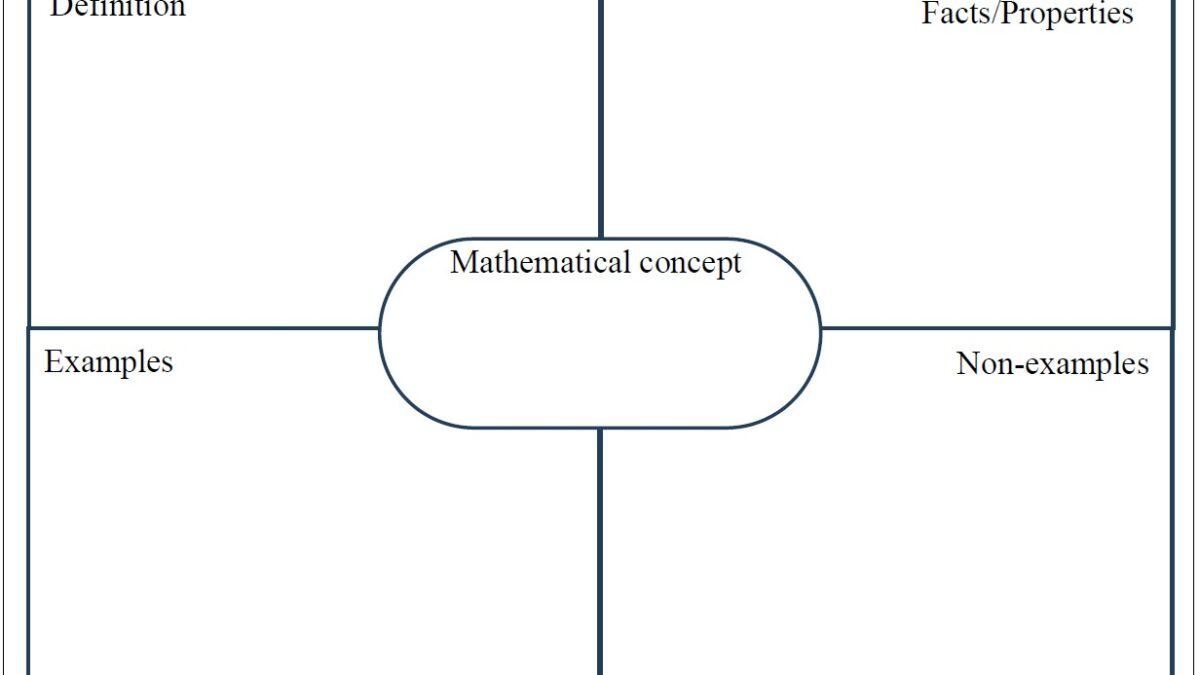Effective Use of the Frayer Model in Maths Lessons
Effective Use of the Frayer Model in Maths Lessons
By Orlando Hurtado | www.mathssupport.org
In today’s secondary mathematics classroom, developing deep conceptual understanding is as important as mastering procedures. One tool that has consistently proven effective in helping students build strong mathematical foundations is the Frayer Model. Originally developed for vocabulary instruction, the Frayer Model is a versatile graphic organiser that can significantly enhance how students engage with mathematical concepts, definitions, and relationships.
Why Use the Frayer Model in Maths?
At its core, the Frayer Model asks students to explore a concept by organising information into four key areas:
– Definition
– Facts/Properties/Characteristics
– Examples
– Non-Examples
This structure naturally encourages a deeper exploration of mathematical ideas, moving beyond rote memorisation. When applied thoughtfully, the Frayer Model helps students:
– Clarify mathematical definitions and avoid common misconceptions.
– Differentiate between closely related concepts (e.g., rational vs. irrational numbers).
– Develop critical thinking by identifying and analysing non-examples.
– Strengthen their ability to explain reasoning, a crucial skill for success in assessments like IGCSE and IB Mathematics.

*Frayer Model Template: Ideal for any mathematical concept*
Practical Strategies for the Classroom
Introduce New Vocabulary and Concepts
Start lessons by using the Frayer Model to introduce terms like function, vector, asymptote, or factor. Students create their own organisers individually or in pairs, using prior knowledge and guided instruction.
Differentiate for Varied Learners
Stronger students can be challenged to create non-examples that are subtly incorrect, prompting critical discussion. Meanwhile, scaffolding can support students who struggle with mathematical language.
Use It as an Assessment Tool
Incorporate Frayer Models into exit tickets or homework assignments to quickly gauge students’ depth of understanding after introducing a new topic.
Encourage Inquiry and Discovery
Rather than giving students a pre-filled Frayer Model, let them explore examples and non-examples through investigative activities. This builds ownership of learning and develops inquiry skills aligned with IB ATL (Approaches to Learning).
—
Examples of Mathematical Concepts Ideal for the Frayer Model
– Prime numbers
– Linear functions
– Geometric transformations
– Probability terms (independent events, mutually exclusive events)
– Properties of different types of angles and polygons

Students creating Frayer Models collaboratively deepens understanding
Support for Your Lessons
At www.mathssupport.org, you will find ready-to-use resources that integrate the Frayer Model into secondary mathematics lessons. From differentiated worksheets to inquiry-based PowerPoints, our materials are designed to save you time while maximising student engagement.
Explore our free and premium downloads, including:
– Frayer Model templates adapted for various topics [FREE]
– Inquiry lesson plans where is useful the Frayer Model
– Revision tasks where students can incorporate Frayer model
By incorporating the Frayer Model strategically, you will not only support deeper understanding but also empower students to articulate mathematical ideas confidently and accurately.







